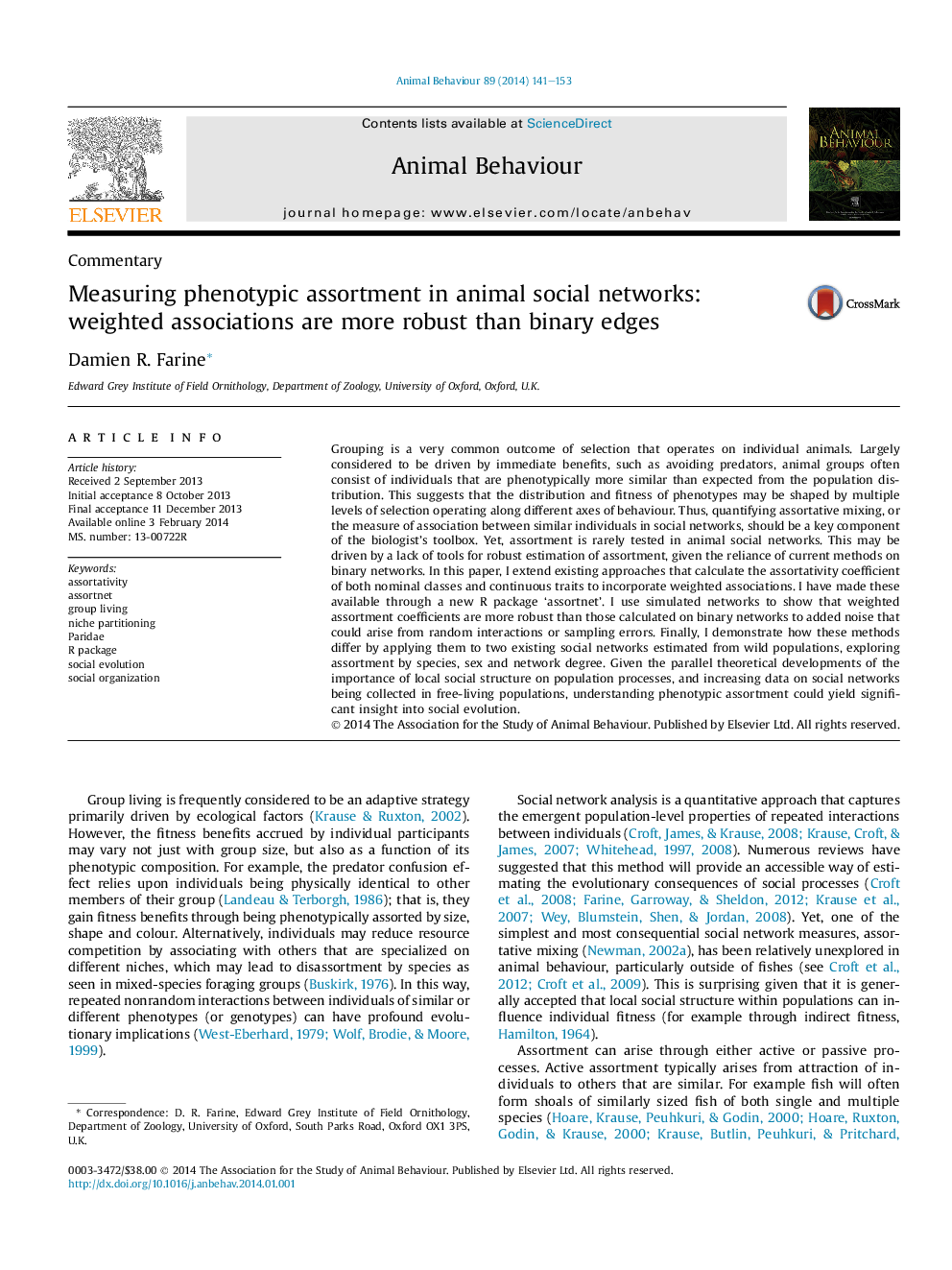| کد مقاله | کد نشریه | سال انتشار | مقاله انگلیسی | نسخه تمام متن |
|---|---|---|---|---|
| 2416466 | 1552239 | 2014 | 13 صفحه PDF | دانلود رایگان |
• I describe a new method incorporating weighted edges to measure network assortment.
• This method is more robust than binary or threshold measures in simulated networks.
• I demonstrate the method using two previously published networks of wild birds.
• Binary assortativity can give misleading answers, leading to flawed conclusions.
• I assess different null models for hypothesis testing using assortment measures.
Grouping is a very common outcome of selection that operates on individual animals. Largely considered to be driven by immediate benefits, such as avoiding predators, animal groups often consist of individuals that are phenotypically more similar than expected from the population distribution. This suggests that the distribution and fitness of phenotypes may be shaped by multiple levels of selection operating along different axes of behaviour. Thus, quantifying assortative mixing, or the measure of association between similar individuals in social networks, should be a key component of the biologist's toolbox. Yet, assortment is rarely tested in animal social networks. This may be driven by a lack of tools for robust estimation of assortment, given the reliance of current methods on binary networks. In this paper, I extend existing approaches that calculate the assortativity coefficient of both nominal classes and continuous traits to incorporate weighted associations. I have made these available through a new R package ‘assortnet’. I use simulated networks to show that weighted assortment coefficients are more robust than those calculated on binary networks to added noise that could arise from random interactions or sampling errors. Finally, I demonstrate how these methods differ by applying them to two existing social networks estimated from wild populations, exploring assortment by species, sex and network degree. Given the parallel theoretical developments of the importance of local social structure on population processes, and increasing data on social networks being collected in free-living populations, understanding phenotypic assortment could yield significant insight into social evolution.
Journal: Animal Behaviour - Volume 89, March 2014, Pages 141–153
